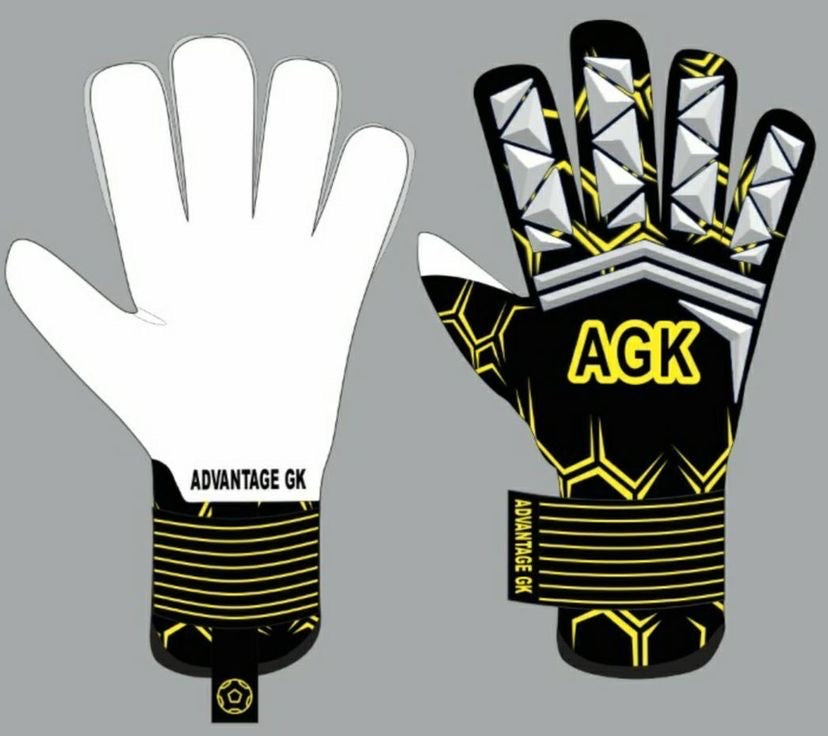
Custom Goalkeeper Gloves from Advantage Goalkeeping
Share
How to Make Your Own Custom Goalkeeper Gloves
If you're a goalkeeper, you know that having the right gloves is essential to your game. Finding a pair of professional quality goalie gloves you like and trust can be hard to find, not to mention quite expensive. One option is to make your custom goalkeeper gloves. With this option, you are in complete control, and you get to decide nearly every aspect of how your GK gloves are made. You have the control to create your own pattern or design for the backhand or top of the glove, determine the style of the palm (aka; palm cut such as roll finger cut or negative cut), select a particular color for the grip, determine the quality of the latex (aka; grip), decide the style of wrist strap you want, and even select the type of backhand materials you want. In this post, we are going to cover the following topics:
- Backhand design
- Grip color
- Grip quality
- Palm cut
- Wrist strap
- Backhand material
- Production timeline
Backhand design
The first step in designing a goalkeeper glove is to develop a design for the backhand or back of the glove. This part of the glove will be seen when you have your hands on top of the ball. You can either create a custom pattern or use a pre-existing design. Your options include embossed latex, sublimated material, silicon printing, rubber injection, or even a combination of options. If you're unsure where to start, we've got some great ideas for you in our previous blog post about customizing goalkeeper gloves.
Grip color
Once you've decided on a backhand design, the next step is to choose the colors for your gloves grip (aka; latex). This part can be fun because you get to select any color you want for the grip you choose. Most grips are available in five to eight different colors. You can even create a two-tone look by selecting different colors for the grip. This is commonly seen with the middle two fingers one color while the palm and remaining fingers are another.
Grip quality
The next step is to select the quality of latex you want for your grip. There are multiple options to choose from. The most critical factor here is deciding if you want a professional quality grip or if you can get by with a latex that is one or two steps down. At Advantage Goalkeeper, we only use professional quality latex called German Contact latex, the cousin of Supreme latex, another popular professional quality latex. There is another latex called Giga latex, but companies have recently decided to downgrade this latex from professional to 'very high quality. Again, we only use German Contact for the AGK Pro gloves from Advantage Goalkeeping, which should tell you where our opinion sits. The higher the quality of latex, the better the grip will be. Remember that a higher quality latex also means a higher price tag.
Palm cut
The next step is to select the palm cut of your glove. This is simply the shape of the opening in the palm where you grip the ball. There are multiple cuts available, but the most often used cuts are the roll finger cut, the negative cut, and hybrid cut, typically a combination of roll finger and negative. Other cuts include a flat cut and a combination of flat and roll finger cuts.
Wrist strap
The next step is to select the style of wrist strap you want for your glove. There are three different options: elastic, neoprene, and cotton. Elastic straps are stretchy and fit snugly around your wrist. These are commonly referred to as wraparound straps. Neoprene straps are stretchy material and fit comfortably around your wrist. They are also waterproof, which can be helpful if you play in wet conditions. Latex/mesh straps are the most traditional type of strap, and they are made of a soft fabric that is comfortable to wear. These straps, like neoprene, are often fixed-length straps.
Backhand material
The final step in customizing your goalkeeper gloves is to select the type of backhand materials you want. There are four different options: micro-mesh, neoprene, airprene, and breathprene. Mesh is a lightweight and breathable fabric that allows your hands to move easily. Neoprene is a stretchy and durable material that provides good protection against impacts. Airprene is also a flexible and durable material but slightly thicker than neoprene. Breathprene is a thin and lightweight fabric that allows your hands to breathe easily.
Production timeline
Once you've finalized all of your selections, it's time to determine the production timeline for your gloves. Remember that custom goalkeeper gloves require a longer lead time than regular goalie gloves. It typically takes about 90-120 days to design to create a custom pair of GK gloves. This includes time to design your gloves, select the materials, consult with the manufacturer to ensure all design elements work together, negotiate pricing and delivery, place your order, and finally receive your goalie gloves.We hope this post has helped you create your very own custom goalkeeper gloves. If you have any questions, please don't hesitate to reach out to us. As goalkeeper glove designer and distributor, we produced nearly 1,000 pairs of goalie gloves in 2021 alone. Keepers wear AGK Pro gloves (our brand) from elite high school GKs to professionals playing in the USL, MASL, and NISA leagues.
Contact us today. We would be happy to help you create the perfect gloves for your club, school, or professional soccer team.
